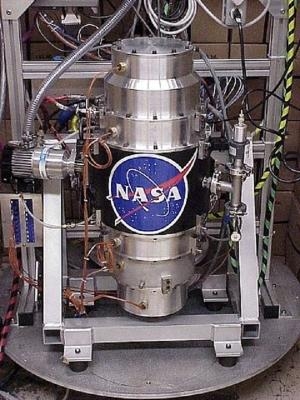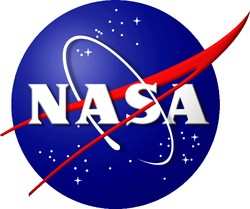Sun, Apr 13, 2014
Issues Call For Proposals For Alternative Energy Storage Devices
NASA is seeking proposals for the development of new, more capable, energy storage technologies to replace the battery technology that has long powered America's space program.

Fly wheels, such as the NASA G2 flywheel module pictured here, are one way to store rotational energy for use by spacecraft or machines on Earth. NASA’s looking for new energy storage systems to enable our future exploration missions.
The core technologies solicited in the Wednesday call for proposals will advance energy storage solutions for the space program and other government agencies, such as the Department of Energy's Advanced Research Projects Agency (ARPA-E) through ongoing collaboration with NASA and industry.
"NASA is focusing on creating new advanced technologies that could lead to entirely new approaches for the energy needs of the agency's future Earth and space missions," said Michael Gazarik, associate administrator for space technology at NASA Headquarters in Washington. "Over the next 18 months, NASA's Space Technology Mission Directorate will make significant new investments that address several high priority challenges for achieving safe and affordable deep-space exploration. One of these challenges, advanced energy storage, offers new technology solutions that will address exploration and science needs while adding in an important and substantive way to America's innovation economy."

NASA's solicitation has two category areas: "High Specific Energy System Level Concepts," which will focus on cell chemistry and system level battery technologies, such as packaging and cell integration; and, "Very High Specific Energy Devices," which will focus on energy storage technologies that can go beyond the current theoretical limits of Lithium batteries while maintaining the cycle life and safety characteristics demanded of energy storage systems used in space applications.
Proposals will be accepted from NASA centers and other government agencies, federally funded research and development centers, educational institutions, industry and nonprofit organizations. NASA expects to make approximately four awards for Phase I of the solicitation, ranging in value up to $250,000 each.
Through solicitations and grants, NASA's investments in space technology provide the transformative capabilities to enable new missions, stimulate the economy, contribute to the nation's global competitiveness, and inspire the next generation of scientists, engineers, and explorers.
(Image provided by NASA)
More News
“We have seen astounding demand for the G800, and the entire Gulfstream team is excited to begin making deliveries to our customers. The G800 is entering service with extraor>[...]
Aero Linx: Recreational Aviation Australia (RAAus) Recreational Aviation Australia is progressively working towards improving safety outcomes through a holistic approach to safety >[...]
Classic Klyde Morris From 11.07.16 (and Remembering Bob...) FMI: www.klydemorris.com>[...]
Also: GADFLY AI-Driven Engine Analysis, Knockoff Iranian Drones, Russian Surveillance, 40 NASA Missions Chopped This year’s Zenith Homecoming event will soon be taking off at>[...]
Also: H55 Completes American Tour, Robinson Trade-Ins, Retired AV-8B Harrier, NS-35 Mission Organizers of the iconic annual Air Race Classic will soon be opening registration for t>[...]
 Aero-News: Quote of the Day (08.28.25)
Aero-News: Quote of the Day (08.28.25) ANN's Daily Aero-Linx (08.28.25)
ANN's Daily Aero-Linx (08.28.25) Classic Klyde Morris (08.25.25)
Classic Klyde Morris (08.25.25) Airborne 08.25.25: Zenith Homecoming, VP Racing, Affordable Flying Expo 2025
Airborne 08.25.25: Zenith Homecoming, VP Racing, Affordable Flying Expo 2025 Airborne 08.22.25: ARC Spinoff, Nat'l Championship Air Races, Hawkins Accident
Airborne 08.22.25: ARC Spinoff, Nat'l Championship Air Races, Hawkins Accident




